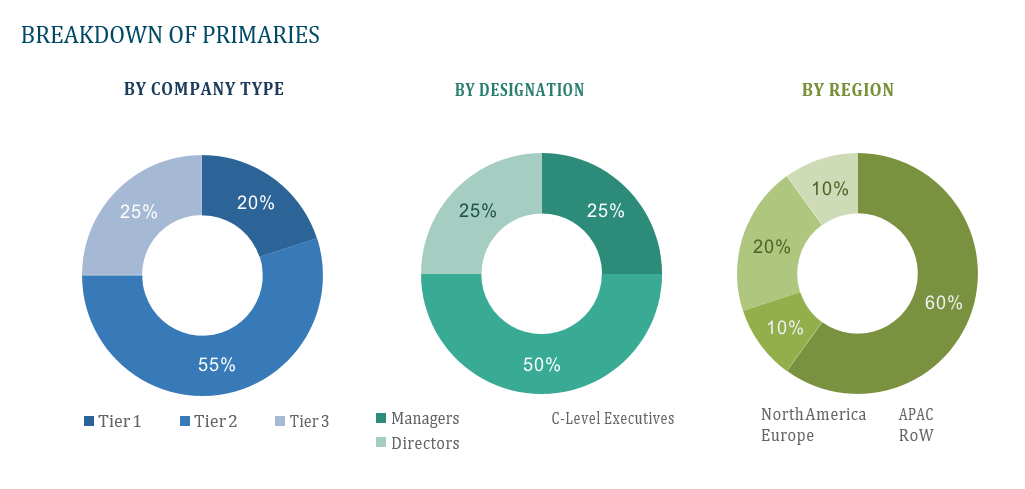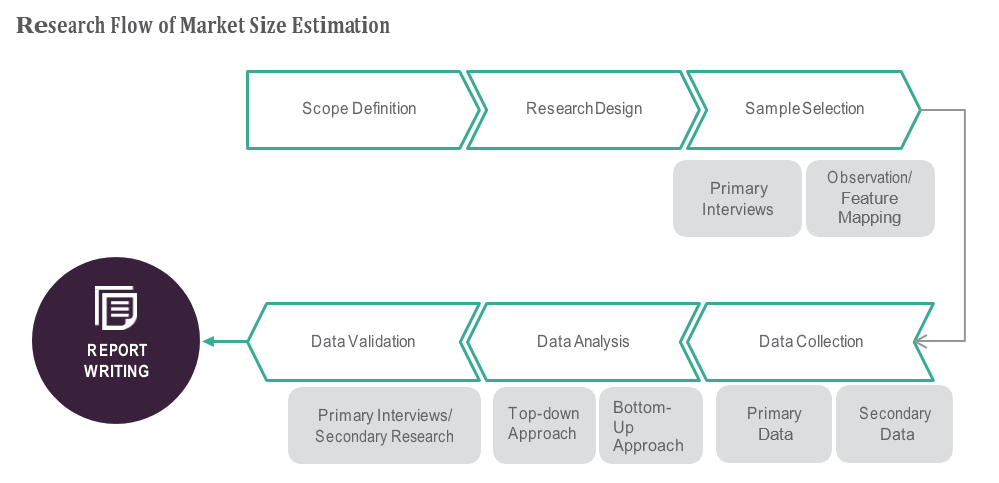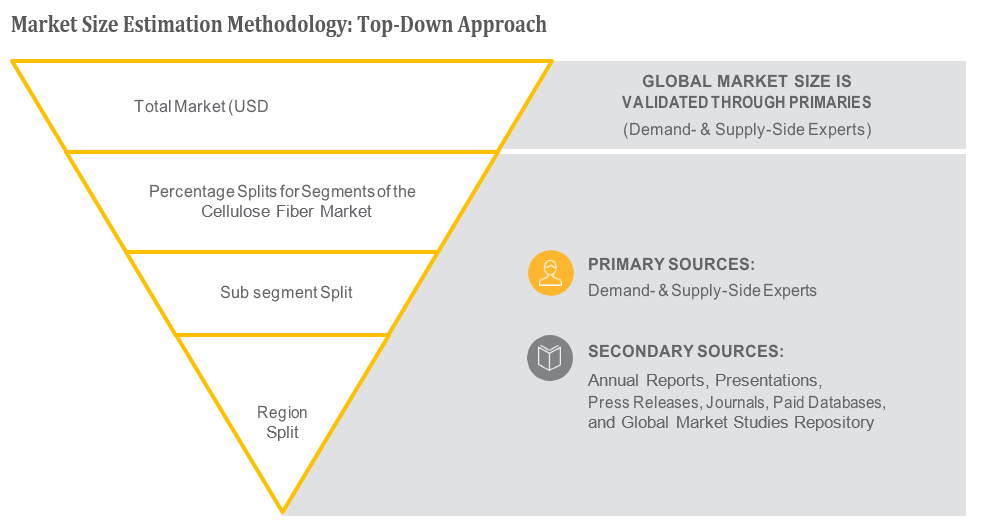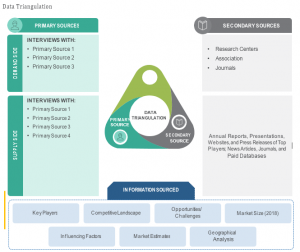OVERVIEW
The Cell Isolation Market is currently valued at USD 13.82 billion in 2024 and will be growing at a CAGR of 13.85% over the forecast period to reach an estimated USD 26.47 billion in revenue in 2029. The cell isolation market encompasses a range of techniques and technologies aimed at separating specific cell types from complex biological samples such as blood, tissue, or cell cultures. This process is crucial in various fields including research, diagnostics, and therapy development. Cell isolation enables the study and manipulation of individual cell populations, allowing researchers to delve into their unique characteristics, functions, and interactions. Techniques within this market include centrifugation, flow cytometry, magnetic-activated cell sorting (MACS), and fluorescence-activated cell sorting (FACS), among others. With advancements in biotechnology and a growing emphasis on personalized medicine, the cell isolation market continues to expand, driven by the demand for precise and efficient isolation methods tailored to specific research and clinical applications.
The increasing prevalence of chronic diseases and disorders underscores the need for precise diagnostic and therapeutic solutions, driving demand for cell isolation technologies that can facilitate targeted research and treatment development. Secondly, the rising adoption of personalized medicine approaches emphasizes the importance of understanding individual cell behavior, driving the demand for high-throughput and efficient cell isolation techniques. Additionally, advancements in biotechnology, such as the development of novel reagents, instruments, and automation solutions, are enhancing the efficiency and accuracy of cell isolation processes, further propelling market expansion. Moreover, the growing investment in research and development activities, both in academic and industrial sectors, continues to drive innovation in cell isolation technologies, fostering market growth. Furthermore, the expanding applications of cell-based therapies, regenerative medicine, and stem cell research are creating new opportunities for cell isolation technologies, as precise cell isolation is crucial for the successful implementation of these therapies.
Market Dynamics
Drivers:
The increasing prevalence of chronic diseases and disorders underscores the need for precise diagnostic and therapeutic solutions, driving demand for cell isolation technologies that can facilitate targeted research and treatment development. Secondly, the rising adoption of personalized medicine approaches emphasizes the importance of understanding individual cell behavior, driving the demand for high-throughput and efficient cell isolation techniques. Additionally, advancements in biotechnology, such as the development of novel reagents, instruments, and automation solutions, are enhancing the efficiency and accuracy of cell isolation processes, further propelling market expansion. Moreover, the growing investment in research and development activities, both in academic and industrial sectors, continues to drive innovation in cell isolation technologies, fostering market growth. Furthermore, the expanding applications of cell-based therapies, regenerative medicine, and stem cell research are creating new opportunities for cell isolation technologies, as precise cell isolation is crucial for the successful implementation of these therapies.
Key Opportunities:
The cell isolation market presents several key opportunities for growth and innovation. One significant opportunity lies in the development of integrated and automated cell isolation platforms that offer streamlined workflows, improved efficiency, and enhanced reproducibility. These platforms can cater to the increasing demand for high-throughput and standardized cell isolation processes across various research and clinical applications. Additionally, there is potential for the expansion of cell isolation technologies into emerging fields such as single-cell analysis and spatial transcriptomics, where precise isolation of individual cells is essential for deciphering complex biological processes. Moreover, the rising demand for cell-based therapies and regenerative medicine opens avenues for the development of novel isolation techniques optimized for the isolation and enrichment of therapeutic cell populations. Furthermore, with the growing emphasis on point-of-care diagnostics and decentralized healthcare, there is an opportunity to develop portable and user-friendly cell isolation devices that can be deployed in resource-limited settings, facilitating rapid and accurate diagnosis and treatment monitoring.
Restraints:
One significant restraint is the complexity and variability of biological samples, which can pose challenges in achieving consistent and reliable cell isolation outcomes. Additionally, the high cost associated with advanced cell isolation technologies, including equipment, reagents, and maintenance, may limit their accessibility, particularly in resource-constrained settings. Moreover, regulatory requirements and ethical considerations surrounding the use of human cells in research and clinical applications impose stringent compliance standards, which can increase the time and cost of bringing new cell isolation products to market. Furthermore, the lack of standardization across cell isolation techniques and protocols may lead to variability in results and hinder comparability between studies, limiting the widespread adoption of specific isolation methods. Addressing these restraints will be essential for unlocking the full potential of the cell isolation market and realizing its benefits in various fields, from basic research to clinical practice.
Regional Information:
• In North America, the cell isolation market is characterized by robust research and development activities, supported by a strong presence of pharmaceutical and biotechnology companies, academic institutions, and government research funding. The region benefits from advanced infrastructure and technological capabilities, driving the adoption of innovative cell isolation techniques and technologies. Moreover, favorable regulatory policies and a well-established healthcare system contribute to the widespread uptake of cell isolation products and services. However, the market also faces challenges such as high competition, stringent regulatory requirements, and healthcare cost constraints, which may impact market growth to some extent.
• In Europe, the cell isolation market is propelled by increasing investments in life sciences research, coupled with a growing emphasis on personalized medicine and regenerative therapies. The region boasts a highly developed healthcare infrastructure and a robust biotechnology sector, fostering the adoption of advanced cell isolation technologies. Furthermore, collaborative initiatives between academia, industry, and government bodies drive innovation and accelerate the development of novel isolation methods. However, market growth may be hindered by economic uncertainties, stringent regulatory frameworks, and reimbursement challenges, which could affect the affordability and accessibility of cell isolation products and services.
• In the Asia Pacific region, the cell isolation market is witnessing rapid growth fueled by expanding biopharmaceutical and biotechnology sectors, rising healthcare expenditure, and increasing research and development activities. Countries like China, Japan, and India are emerging as key markets, driven by government initiatives to promote biotechnology innovation and attract foreign investments. Moreover, the region benefits from a large population base, providing a vast pool of biological samples for research and clinical applications. However, market growth may be tempered by regulatory complexities, limited infrastructure in some regions, and varying levels of healthcare access and affordability across countries.
Recent Developments:
• In October 2022, Thermo Fisher Scientific launched a closed and automated cell isolation and bead removal solution to help evolve cell therapy manufacturing. The new technology improves cell purity and isolation efficiency and increases the recovery of target cells for scalable cell therapy manufacturing.
• In January 2022, Sony Corporation launched CGX10, an advanced cell isolation system that sorts cells at high speed and high purity in a closed system.
Key Market Players:
Thermo Fisher Scientific, Miltenyi Biotec, Beckman Coulter (a subsidiary of Danaher Corporation), STEMCELL Technologies, BD Biosciences (a subsidiary of Becton, Dickinson and Company), Merck KGaA (Merck Millipore), Bio-Rad Laboratories, GE Healthcare Life Sciences (a subsidiary of General Electric Company), Terumo BCT (a subsidiary of Terumo Corporation), and Sysmex Corporation.
Frequently Asked Questions
1) What is the projected market value of the Cell Isolation Market?
– The Cell Isolation Market is expected to reach an estimated value of USD 26.47 billion in revenue by 2029.
2) What is the estimated CAGR of the Cell Isolation Market over the 2024 to 2029 forecast period?
– The CAGR is estimated to be 13.85% for the Cell Isolation Market over the 2024 to 2029.
3) Who are the key players in the Cell Isolation Market?
– Thermo Fisher Scientific, Miltenyi Biotec, Beckman Coulter (a subsidiary of Danaher Corporation), STEMCELL Technologies, BD Biosciences (a subsidiary of Becton, Dickinson and Company), Merck KGaA (Merck Millipore), Bio-Rad Laboratories, GE Healthcare Life Sciences (a subsidiary of General Electric Company), Terumo BCT (a subsidiary of Terumo Corporation), and Sysmex Corporation.
4) What are the drivers for the Cell Isolation Market?
– The rise in chronic diseases and disorders necessitates precise diagnostic and therapeutic solutions, boosting demand for cell isolation technologies. Personalized medicine and biotechnology advancements enhance efficiency and accuracy. Investment in research and development drives innovation, while cell-based therapies, regenerative medicine, and stem cell research create new opportunities for precise cell isolation.
5) What are the restraints and challenges in the Cell Isolation Market?
– The complexity and variability of biological samples, high costs of advanced cell isolation technologies, stringent regulatory requirements, and lack of standardization across techniques limit the potential of the cell isolation market. Addressing these restraints is crucial for unlocking its full potential in various fields, from basic research to clinical practice.
6) What are the key applications and offerings of the Cell Isolation Market?
– Key applications of cell isolation include cancer research, where the precise isolation of tumor cells enables the study of cancer biology and the development of targeted therapies. In regenerative medicine, cell isolation facilitates the isolation and expansion of stem cells for tissue engineering and transplantation. Additionally, in immunology, isolated immune cells are utilized to study immune responses and develop immunotherapies.
7) Which region is expected to drive the market for the forecast period?
– North America is expected to have the highest market growth from 2024 to 2029
Why Choose Us?
Insights into Market Trends: Global Market Studies reports provide valuable insights into market trends, including market size, segmentation, growth drivers, and market dynamics. This information helps clients make strategic decisions, such as product development, market positioning, and marketing strategies.
Competitor Analysis: Our reports provide detailed information about competitors, including their market share, product offerings, pricing, and competitive strategies. This data can be used to inform competitive strategies and to identify opportunities for growth and expansion.
Industry Forecasts: Our reports provide industry forecasts, which will inform your business strategies, such as investment decisions, production planning, and workforce planning. These forecasts can help you to prepare for future trends and to take advantage of growth opportunities.
Access to Industry Experts: Our solutions include contributions from industry experts, including analysts, consultants, and subject matter experts. This access to expert insights can be valuable for you to understand the market.
Time and Cost Savings: Our team at Global Market Studies can save you time and reduce the cost of conducting market research by providing comprehensive and up-to-date information in a single report, avoiding the need for additional market research efforts.












